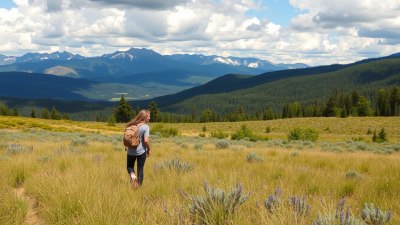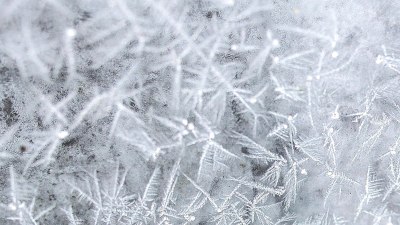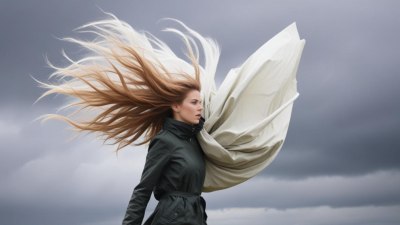The Art of Dressing for 30°F Mornings and 80°F Afternoons
Master the art of dressing for fluctuating temperatures from chilly mornings to warm afternoons.

Image by wavebreakmedia on Freepik
When faced with the unique challenge of 30°F mornings and 80°F afternoons, dressing appropriately can feel like an art form. The drastic temperature variance throughout the day demands a thoughtful approach to layering and fabric selection. Exploring this art can not only keep you comfortable but can also elevate your style game significantly.
To start, understanding the fundamental principles of layering is essential. Layers allow you to adapt your outfit to the ever-changing temperatures. A smart three-layer system is a great approach: base layer, mid-layer, and outer layer. The base layer is crucial as it sits directly against your skin, providing warmth and moisture-wicking properties. Choose materials such as merino wool or synthetic blends that offer warmth while being breathable. This will ensure that as temperatures rise in the afternoon, you won’t feel overheated.
Base Layer Essentials
Your base layer should fit snugly without constricting your movement. Look for long-sleeved tops or thermal shirts, depending on how cold it is during your morning commute. For bottoms, thermal leggings or fitted long underwear are excellent choices that will not only keep you warm but also remain undetectable beneath your outer layers.
Color plays a significant role here too. Neutral colors like black, grey, or navy can be easily paired with various mid-layers and won’t clash with the rest of your outfit. However, if you want to add a pop of color, consider thermal undergarments that feature fun patterns. These can add an element of personality to your ensemble and keep the look fresh.
Mid-Layer Dynamics
The next layer, the mid-layer, serves as insulation. Fleece jackets, cardigans, or lightweight puffer vests are fantastic mid-layer options. When choosing a mid-layer, consider the material and its thermal efficiency. Fleece is great for trapping body heat while remaining lightweight and flexible. Down vests or jackets are ideal for those bitterly cold mornings since they provide excellent insulation without bulk.
In terms of color and style, mid-layers can be where you really express your fashion sense. Opt for bold colors or interesting textures to add depth to your outfit. A bright-colored fleece can be both functional and stylish, creating a visually appealing contrast against your base layer. You might also choose a tailored cardigan for a polished look if your day contains meetings or important engagements.
Outer Layer Considerations
The outer layer is your shield against the elements. Since mornings can be treacherous with a biting wind and possibly even snow, a well-insulated, water-resistant jacket is key. Choose a jacket that is versatile enough to adapt to the warmer afternoon temperatures. Lightweight, packable jackets are excellent choices, as you can easily take them off and carry them once the sun rises higher in the sky.
Look for options that feature breathable materials or vents to allow for airflow. This way, when you start to feel warm, you don’t have to sacrifice comfort for style. A trench coat is another option that is both chic and practical. It provides coverage against the cold and can easily be unbuttoned to allow for airflow as the day warms up.
Accessorizing Wisely
Accessories are vital when dressing for fluctuating temperatures. Consider your choices carefully to ensure you can adapt to the changing climate throughout the day. Scarves and hats are wonderful for those chilly mornings and can easily be removed as the sun rises. Opt for materials that are warm yet lightweight, such as wool or cashmere. Neutral or matching colors can enhance your overall look, allowing your outfit to appear cohesive.
Gloves may also be necessary for particularly cold mornings. Choose lightweight and touch-sensitive options so that you can still access your phone and other devices without needing to remove them. Footwear is another essential aspect; insulated but breathable boots can keep your feet warm without overheating. Choose stylish ankle boots that can be paired with both casual and work attire.
Choosing the Right Fabrics
The fabric of your clothing significantly affects how you experience varying temperatures throughout the day. Wool, cotton, and synthetic blends are your best friends when dressing for unpredictable weather. Wool is exceptional for insulation and moisture-wicking, making it a go-to for base layers. Cotton is comfortable but can absorb moisture, so it is better utilized in outer layers rather than next to skin unless it’s specially treated.
Synthetic fabrics can be excellent options for both base and mid-layers, often blending the best properties of materials to keep you warm and comfortable. Always ensure that any fabric you select allows for adequate breathability to prevent overheating as the day progresses.
Smart Outfit Planning
Planning your outfit the night before can save you valuable time and ensure that you remain unflustered by the sudden temperature changes. Lay out your entire outfit, considering each layer and accessory to see how they will work together. When choosing colors and styles, think about your entire day—will you be indoors in a warm office or running outdoor errands?
Prioritize comfort in your planning. If you know you will be walking or standing a lot, choose footwear that provides adequate support. Additionally, consider the fit of your clothing; nothing disrupts a day faster than restrictive or uncomfortable clothing. Fabrics that stretch and move with you will ensure you stay comfortable all day long.
Layering for the Office
The office environment can sometimes complicate your dressing strategy. Most places have central heating that can be warm even during the coldest of mornings. Choose an outfit that allows you to remove layers once you’re indoors while still ensuring you look professional and put-together. A blazer over your base and mid-layer can instantly elevate your look, while also providing warmth during your morning commute.
When selecting office-appropriate outfits for fluctuating temperatures, pay attention to dress codes. Many workplaces have set expectations regarding attire; therefore, planners may need to ensure the layering remains compliant with company standards. Accessories like statement necklaces or scarves can also transform a more casual look into something suitable for professional settings.
Staying Stylish Across Temperatures
Style doesn’t have to take a backseat when dressing for changing temperatures. Mix textures and fabrics for an elevated look. Consider pairing a chunky knit scarf with a sleek, lightweight down jacket. This juxtaposition can add visual interest to your outfit while still allowing for temperature control.
Statement pieces, such as bold-print projectiles or tailored trousers, can serve as the focal point of your outfit. Build the rest of your outfit around these standout pieces using more neutral small-layer options. Ensure your footwear complements your attire, as well; go for sleek ankle boots in a versatile color for a sophisticated finish.
Layering
Ultimately, mastering the art of dressing for chilly mornings and warm afternoons involves a careful balance between function and style. By utilizing layers thoughtfully, selecting appropriate fabrics, and planning your outfits in advance, you can easily navigate the fluctuating temperatures of your day.
Your goal should be to feel comfortable and confident, regardless of the temperature. Pay attention to the small details, from accessories to color choices, to create a polished look that transitions smoothly from frigid mornings to warm afternoons. With practice, you will develop your unique approach to layering, ensuring you are always prepared for whatever the day might bring.











